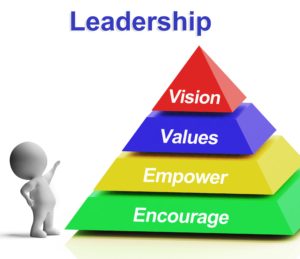In my previous post on organizational CEO’s, I offered the suggestion that organizations should have a Chief Eleemosynary Officer. What in the world is an eleemosynary officer? Where did I get the idea that organizations needed an eleemosynary officer? I will admit that prior to last week I don’t think I had ever heard of the word eleemosynary. As with most word trips since my traumatic brain incidents of 2009 (the implosion of a benign meningioma and four tonic-clonic seizures within a thirty-minute time span), the journey to finding the meaning and significance of eleemosynary was not a straight line.
As I prepared the post A Proposal for Changing the Definition and Expected Behaviors of a CEO, I sat in on a number of diverse webinars. Two of the webinars dealt with creating a positive workplace environment and the benefits that accrue from such a setting. These webinars both concluded that the happy workplace was a healthier workplace, physically, psychologically and emotionally. One of the webinars presented some research data that confirmed that healthier and happier employees worked harder and produced more. Both webinars pushed the idea that the tone of an organization begins at the top. If the CEO of an organization habitually broadcasts happiness, the organization is a healthier and more productive work environment. By broadcasting happiness, I am not talking about being a clown, constantly laughing and telling jokes. Happiness or positive psychology has become a legitimate branch of science. The Declaration of Independence affirms the right of every American to posses life, liberty and the pursuit of happiness. One place to begin broadcasting happiness is to make the effort to encourage those with whom you have contact, particularly anyone who is having a rough time. Happiness is contagious. It spreads more quickly, if it begins at the top of an organization. To more fully understand the attributes and benefits of a positive workplace, I highly recommend the work, and webinars of Shawn Achor, Michelle Gielan and others at Good Thinking Inc. For such a workplace to exist, the organization needs a Chief Encouragement Officer.
A third webinar looked at organizational cultures and structures, and the thorny question of how one changes an entrenched, but badly functioning culture. One suggestion popped out at me. The presenter repeatedly used the word “engagement.” Employees were more productive when they were engaged in their work. When did individuals feel more engaged? The key to employee engagement was a sense of self-determination, authority and empowerment. This webinar reminded me of one of the management principles that I claimed as an operational strategy very early in my administrative career: “Push decision making down to the most appropriate level.” This is the essence of empowerment. Very early in my administrative career I also learned that empowerment must begin at the top of the organization. If the chief executive officer is not on board with this program, people will get mixed messages and eventually gridlock will set in. Thus the chief executive officer must also be the chief empowerment officer.
Two more webinars dealt with the topic of ethics and ethical behavior within an organization. As I reflected on the content of those webinars, I remembered some of the academic conference presentations by Greg Lozier, Deborah Teter and Lawrence Sherr that I had attended over many years in higher education that focused on high performing campuses. One common theme from their work was that one characteristic of a high performing organization was the existence of a code of ethics that was well established within the organization, publicized widely across the whole organization, well known by everyone within the organization and adhered to by all members of the organizations from the top to the bottom. If the ethics of an organization is a reflection of the ethical code of its leadership, then doesn’t it make sense for an organization to have a Chief Ethics Officer?
Therefore, there were at least four different visions of a CEO: 1) Chief Executive Officer; 2) Chief Ethics Officer; 3) Chief Empowerment Officer; and 4) Chief Encouragement Officer. My mind started wandering and wondering if there were other types of CEO’s lurking out there. I needed E-words to build this model. Those of you who know my story, know my struggle with words the past six years. As part of my therapy program to hang onto and improve my memory of words, I have spent hours writing and doing crossword puzzles. It’s not uncommon for me to stop in the middle of a thought and say to my wife, “I need a word.” She usually plays along with this game and gives me the first word that comes to her mind. I will shoot back at her, “That’s not the word I need.” I proceed to explain what I want the missing word to do or mean. In my writing and crossword puzzle endeavors, in addition to Google and my wife, I have come to rely heavily on three books, The American Heritage Dictionary, with over 70,000 entries, Webster’s Basic Thesaurus, with over 150,000 synonyms and antonyms, and Webster’s New Explorer Crossword Puzzle Dictionary, with 350,000 answer words in over 150 categories. In this case, I first went to the crossword puzzle dictionary, since it was physically the closest to my computer. As I read through the e-words, I easily found 10 more options for defining a CEO.
E-Word Cloud
 About halfway through the e-words, I came across one that hit me right between the eyes. Eleemosynary. I don’t remember ever seeing this word before. I know I have never used it previously. As I read the suggested crossword answers to the clue “eleemosynary” I said to myself, here is another option for CEO. The word “eleemosynary” has been used as a clue for the following list of answers:
About halfway through the e-words, I came across one that hit me right between the eyes. Eleemosynary. I don’t remember ever seeing this word before. I know I have never used it previously. As I read the suggested crossword answers to the clue “eleemosynary” I said to myself, here is another option for CEO. The word “eleemosynary” has been used as a clue for the following list of answers:
humane, generous, altruistic, beneficient, benevolent, charitable, munificient, openhanded, humanitarian, philanthropic.

“Just click the Donate button, fill out the form that pops up selecting your favorite charity, and the company will match your gift.”

“Let’s make this is a Merry Christmas for every child in our community by making sure they recieve at least one toy this year.”

“Hello! Let me welcome you to our company and family.”

“Here, give me your hand. I’ll help you up.”

“Lean on me! I’ll help you get to where you’re going.”
This is a great list of adjectives, that would describe a great organization. In order for an organization to be truly humane or philanthropic, the leadership of the organization would have to define such a vision, set such an example, and encourage such behavior within the organization. Leadership would have to empower the individual members of the organization to demonstrate these traits. Does the organization give to charitable causes? Does the organization encourage employees to give? For non-profits, does it make it easy for employees to give back to the organizationa? Does it match charitable contributions? Does the organization have a volunteer program? Does it encourage employees to volunteer on their own time? Does the organization treat everyone fairly and equitably within the organization, without discrimination? Does the organization welcome new members and help them acclimate to the organizational culture? Every well-functioning organization needs a Chief Eleemosynary Officer.
Since this is Thanksgiving week, I am taking a break from my list of planned blog posts and preparing my next post on the meaning and celebration of Thanksgiving.




























